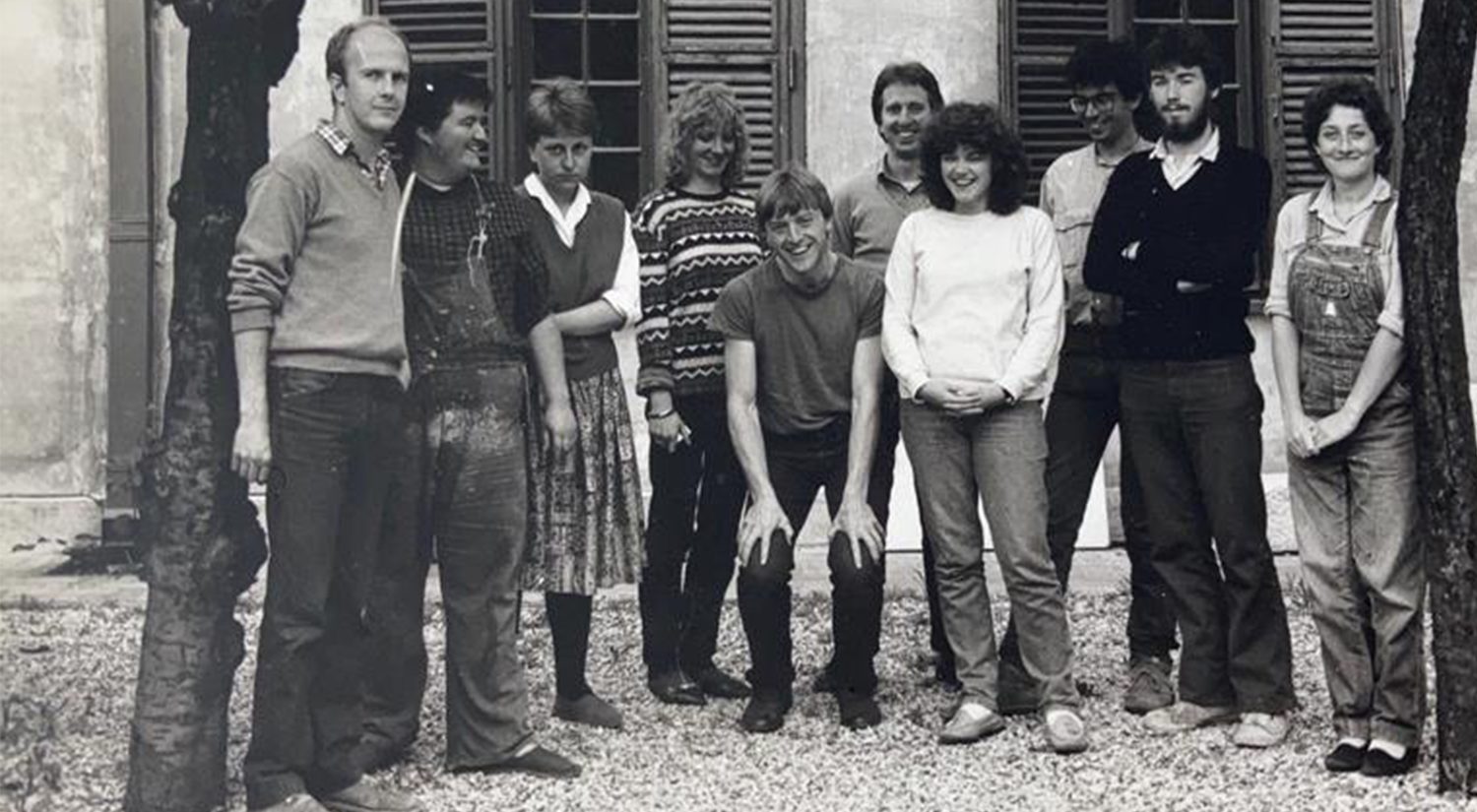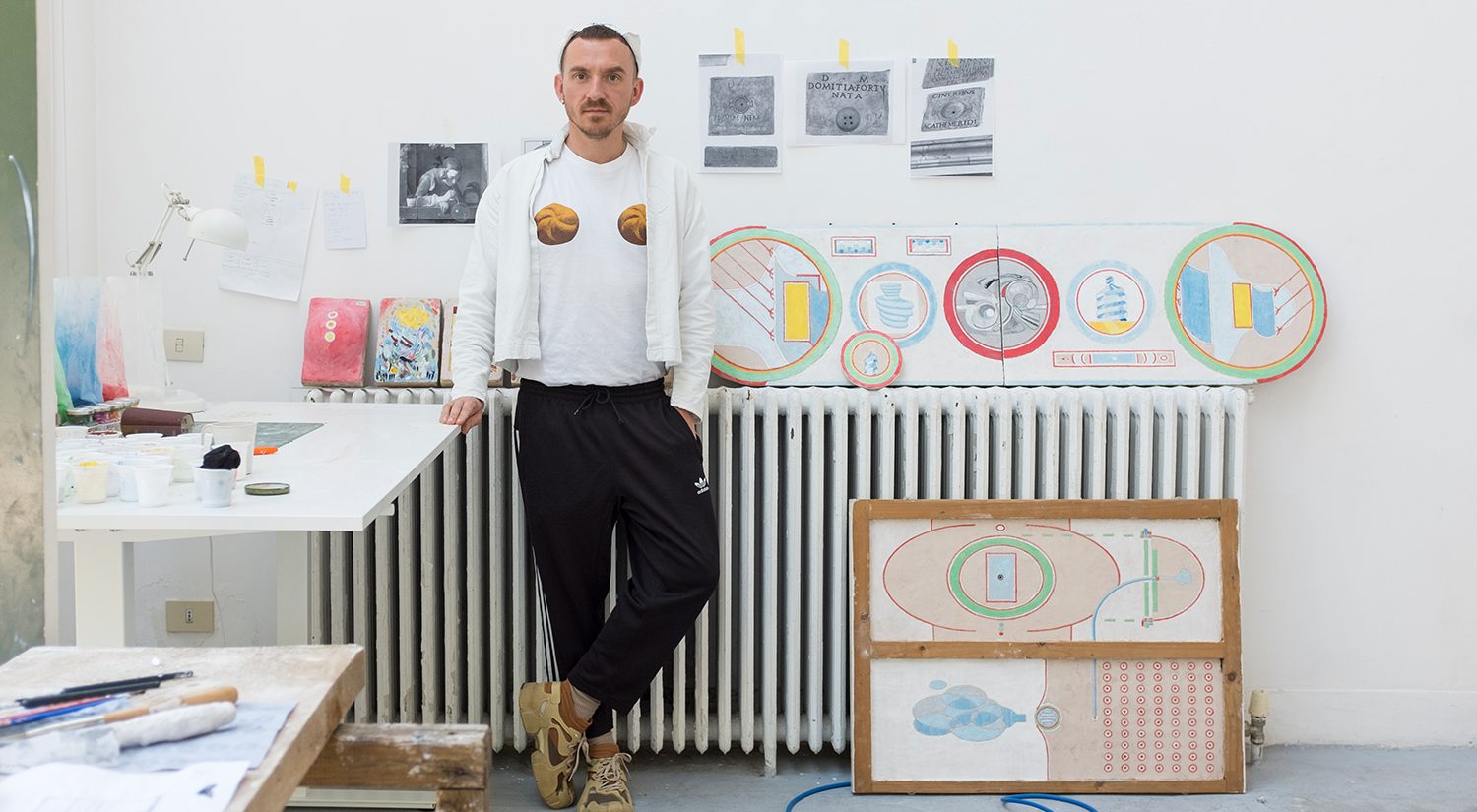
Back row: Unknown, Unknown, Unknown, Eugénie Strong, Colin Gill (Rome Scholar in Painting), Mrs Hardiman, Alfred Hardiman (Rome Scholar in Sculpture), Unknown.
Middle row: Miss Jamison, Miss Makin, Winifred Knights (Rome Scholar in Painting).
Front row: F.O. Lawrence (Rome Scholar in Architecture), Job Nixon (Rome Scholar in Engraving), Unknown.
During the later months of 1919 and early 1920, Eugénie Sellers Strong was tirelessly pushing to reorganise the structure and expand the services of the BSR Library. We learn from several letters in our miscellaneous box that there was a shared incentive to incorporate the BSR’s students into this restructure. New collections were acquired and catalogued while new rules were drafted, including such policies as strict silence and no writing of letters or private correspondence (one wonders what Strong would have made of our handheld, instantaneous portals to the digital world!). Correspondence between Strong, Ashby and the BSR administrators in the UK during these months revolved around alleviating the directors’ workloads via the appointment of an assistant librarian. Eventually, Miss Enole M. Hake was appointed – who we might find in the circle around Strong, above Makin to the left. Following this, Strong wrote to Edgar John Forsdyke, the BSR FAHL secretary:


13th August 1919. Eugénie Strong writes to Edgar John Forsdyke, FAHL Secretary of the British School at Rome. The discussion of Miss Makin is at point 3. Strong often structured her correspondence around such numbered points. Image courtesy of the Author.
Strong was eager to “help [Makin] to eke out her rather slender scholarship by doing private secretarial work.” We get a sense here of both Strong’s desire to support the lives of students coming to the School as well as the close working relationships she fostered with them. This attention to the lives of the School’s students, during and beyond life at the School, is a consistent trend coming out of these boxes. Makin and Strong worked together in Rome for the next year, alongside Miss Hake, the newly appointed assistant librarian. An idea of how this year was spent is found in Makin’s application to the Gilchrist Studentship for 1920-21, a common path to study at the BSR in the early twentieth century, complete with a referral letter from Strong:






We learn that Makin developed her knowledge of the ancient city of Rome through peripatetic study with Ashby and began research on the topic of the Roman ‘Triumphus’: that religiously sanctified and politically loaded urban procession whereby a Roman military commander and his forces ritually re-entered civic life and paraded through the city of Rome, displaying the spoils of wars fought near and far to the spectating city. Ultimately, Makin was unsuccessful (and indeed for the second time), the award instead going to on Mr. O. K. Struckmeyer – an English literature scholar. Testament to Strong’s admirable investment into the lives of her students and specifically her desire to keep Makin involved at the School, not least for her intellectual contributions, we find in another letter her supporting Makin’s application to the post of assistant librarian:

As Strong puts it: “I am delighted at this and hope that the committee will ratify the appointment, for Miss Makin has already worked with me in the Library and I come to like her more and more in spite of a Scotch temper which at first seemed cantankerous, but she is really very nice and a hard worker – as Dr. Ashby knows – and you can imagine how glad I should be if she could stay on here as part Librarian and part student, working at her “Triumphus.” We should at least have an Archaeologist who stays some time.”
Makin was appointed and began her work in the Library after Christmas 1920, taking over from Miss Hake. She continued to study the Roman triumph. Her findings were eventually published in the Journal of Roman Studies in 1921. In the first footnote, Makin writes: “To this subject my attention was first directed by Mrs. S. Arthur Strong, to whom, as to the Director of the British School at Rome, Dr. Ashby, I am grateful for constant help and guidance. In questions of topography and in the construction of the map the help of Dr. Ashby was invaluable. I have to acknowledge also my indebtedness to Mr. F. O. Lawrence, Rome Scholar in Architecture for 1920, for his kindness in drawing the map.”

Interpersonal, collegial working environments are one of the most rewarding elements of professional life. Here we notice how that very same principle was a feature of Makin’s experience at the School: working closely with the architect F. O. Lawrence, also found in our opening photograph, who helped to produce an illustration of her arguments. With the recent revival of the Scholar’s Prize in Architecture, it is exciting that we may yet see similar collaborations again in the coming years. While much of our topographical understanding of the ancient city has changed in the past century, and not least in the now more fluid approach to the triumphal route,[1] Makin’s study remains, even a century on, a key reference point on the topic and certainly does justice to herself, the tutelage of Ashby and Strong, and also to the community at the BSR in which she worked.
This miscellaneous box, then, has helped to enliven the photo with which we began. Strong surrounds herself with a wonderful cohort of artists and scholars: Winifred Knights, Colin Gill, Alfred Hardiman, and more besides. With the help of our box, we are also able to remember Enole Hake and Alexandrina Makin, that Library support team so critical to the daily running of the School which Strong nurtured and, in the case of Makin, cultivated a passion for the ancient world and provided a platform for research.
This is but one of many stories contained in the miscellaneous box, a box that is hidden away in the basement of the School. It is tantalising to consider who else we might discover by delving into the rich, multihued collections housed in the BSR Archives.
Ben White
[1] See, for instance: M. Beard (2007) The Roman Triumph (Cambridge, MA: Harvard University Press); D. Favro, (2018) ‘Urban Commemoration: the pompa triumphalis in Rome’, in C. Holleran and A. Claridge (eds.) A Companion to the City of Rome (London: John Wiley & Sons, Ltd), 599-618.











